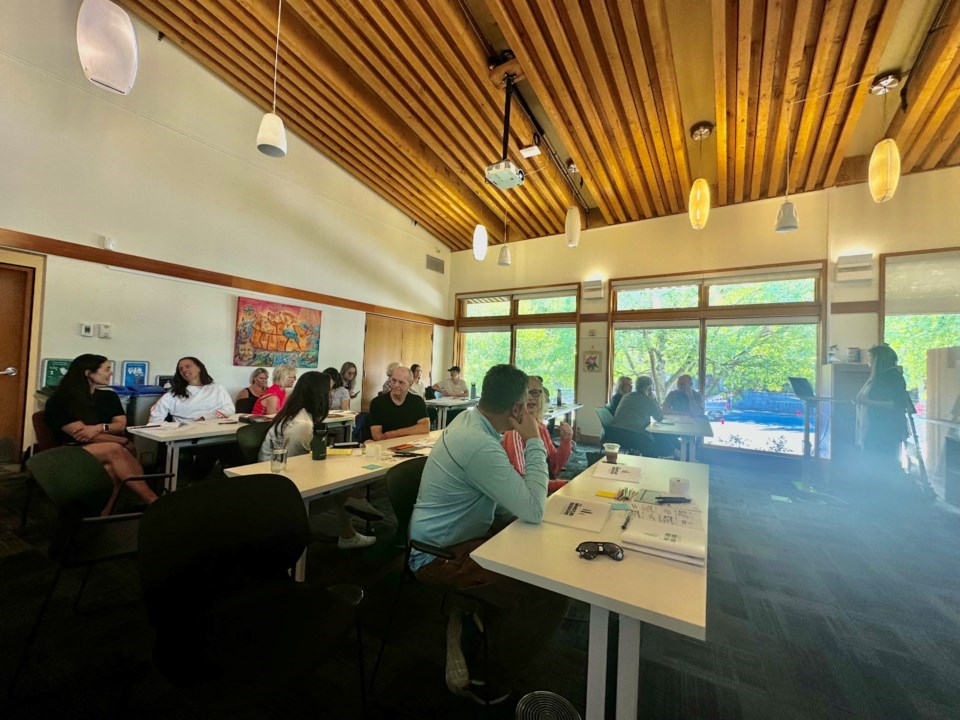As the Resort Municipality of Whistler (RMOW) works to improve its engagement with the wider community, municipal staff and elected officials are looking at new and novel ways to reach a broader cross-section of residents.
“It’s not just about planning the next park or getting community input on our next housing strategy,” said Karen Elliott, the RMOW’s new GM of community engagement and cultural services, at a Sept. 12 Committee of the Whole meeting updating council on the department’s work so far.
“This is about starting to knit together our community, and spreading community knowledge and connection so that when we’re really taxed with a disaster, an economic downturn—the pandemic would be a great example—there are those relationships and that social capital we can draw on … to find solutions to work together. That, to me, is the bigger goal of engagement.”
With community engagement identified as one of council’s four core priorities for its term, the RMOW announced in February it would form an entire new division dedicated to enhancing engagement and strengthening Whistler’s social fabric.
For Elliott, the former Squamish mayor who dealt with her fair share of social division while in office, the renewed commitment to engagement at municipal hall has to come from a “more human-centred approach” that puts government staff and officials squarely in the public’s shoes.
“It's easy for us because we work in local government every day. It feels intuitive to pick up our staff reports or attend a meeting and understand how that's going to flow and where to look for the information,” Elliott said to council. “When citizens get activated on an issue, none of that's intuitive to them. So, I think we really have to start walking in their shoes when they do have to approach the RMOW, when they do want to provide input. What are those pathways, those intuitive ways we know they can reach not only staff, but council?”
The RMOW is recommending a multipronged approach to engagement, including expanding its communication channels; developing content aimed at underserved segments of the community; improving real-time information sharing; and removing barriers for input into council processes and procedures.
“We want to build on that and maybe shift our practices. We’re not talking about breaking anything and starting again. We’re talking about evolution,” Elliott said.
The report presented to council this week sets a guiding definition and principles for future engagement, but at its core, Elliott sees the desired shift as philosophical as much as procedural, with the RMOW viewing itself as a host and connector of people and ideas.
“If we can move in this direction of hosting and connecting, then we have an opportunity to innovate a bit and support these new ways of reaching people—but now we do it with a real intent of connecting with [the public] as well,” she said.
Some of this work is already underway. Staff views the Whistler Sessions, a visioning exercise completed last year that lays out four possible future scenarios for the resort if current trends persist, as an example of the kind of “bold and innovative” engagement it wants to continue doing.
The report noted how the RMOW’s communication team, through analytics and “a more engaging and relatable tone,” has increased its social media following, with its Facebook following up 30 per cent compared to the same period last year and its Instagram following up 120 per cent.
“I think there are ways to soften the edges of our government to be more inviting and make it easier to show up and engage,” Elliott noted. “How do we greet people? When people sign up to speak [at a council meeting], are we making them feel more at ease? What does the mayor’s script sound like to open the public hearing?”
Staff sees Committee of the Whole meetings as one area for improvement, by using the biweekly meetings “as a forum for early engagement with Council and the community on critical topics and rethinking our Council report structure to make it easier for citizens to read them and identify key pieces of information,” the report stated.
Elliott was quick to point out this revised approach doesn’t mean there will be deep community engagement on every item that comes across officials’ desks, which would effectively grind a municipality already known for its glacial pace to a crawl.
“If there’s an expectation that a project will be done within a year, then that absolutely influences the length of engagement that we do. But I guess why I want to give staff the freedom to innovate is that it doesn’t mean it has to be any less meaningful even if it’s on a shorter timeframe,” she said.
On projects expected to garner significant community interest, staff proposed a process that would begin with developing an initial engagement plan, before staff present their plan for feedback to a Community Engagement Working Group that would include members of the public with expertise on engagement and would represent a broad spectrum of people who may not always attend RMOW events. After that, staff would bring their engagement plan to council for discussion, before officials would begin their own engagement as planned.
Part of the intent behind the strategy is for RMOW staff and officials to reach a wider range of residents where they’re at, instead of waiting for the public to come to them, particularly younger Whistlerites, a segment of the community that has historically been underrepresented at municipal events and open houses.
For more information, visit whistler.ca/municipal-gov/divisions/community-engagement-cultural-services.




